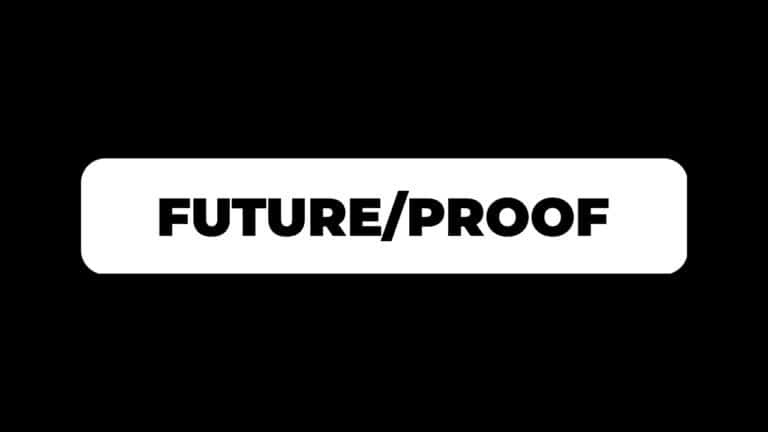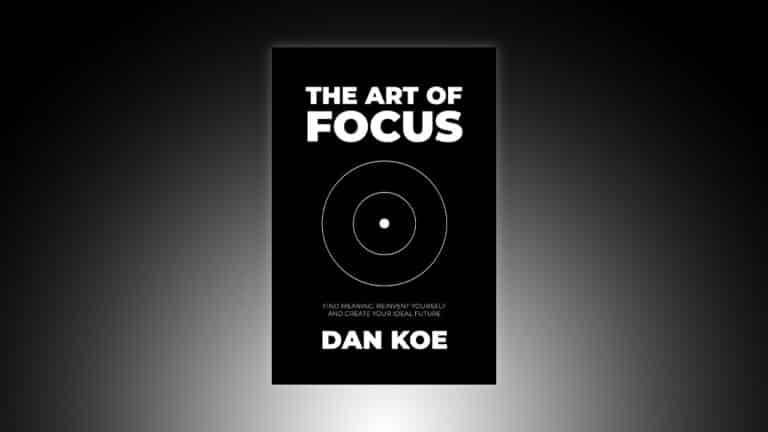Everyone wants to achieve great things, but nobody wants to focus on developing their craft for years on end.
(Plot twist: everybody wants to focus on their craft, but nobody wants to do the internal work, detach from their faulty beliefs, pursue the unconventional path, and see through the projections of your friends, family, and culture)
Fear is standing in your way. Let go.
The Only Worthwhile Path
Throughout your entire life, you have been conditioned to go down the path that others want for you. Everyone around you projects their fears, insecurities, and poor choices onto you. Aware or not, they do not want to see you do better than them. So they let out words and reactions with hopes to keep you at their same level.
If you haven’t noticed, most people are not happy. I mean, how could they be? Fried dopamine receptors from too much screen time and cheap entertainment. Low baseline energy from poor nutrition, lack of movement, and no sense of purpose. Perceptions that keep you closed off to the infinite opportunity that is staring you straight in the face. This is a disaster (for those that let it remain a disaster).
Here’s the thing, growth is natural. That is, as you become closer to nature, “the universe,” or your authentic self — growth and progress is the only option when you detach from the things that are holding you back. Once you destroy your adopted, fear-based worldviews — you open yourself up to what is. Your intuition reveals itself. Your curiosity reveals itself. Your innate drive to lean into your innate masculine / feminine edge reveals itself. To build, protect, provide, nurture, support, etc.
Personal and professional development is a natural byproduct of “letting go” of the external things that do not serve you (and are out of your control). Resisting, fighting, and holding onto these things are what keep you in chains.
This dilemma reminds me of a great tweet by James Clear:
I have a suspicion that most adults (75%+) could pick any skill—excluding sports—and work their way into the top 10% in the world simply by working exclusively on it every day for two years.
— James Clear (@JamesClear) August 9, 2020
But almost nobody displays that degree of focus, so we will never know.
First, I would argue that most people can make it into the top 1% — not 10%. (Those that intellectualize this “statistic” will not reach the 1% as their mental chatter prevents them from taking action, let go). There are too many quality resources out there for building yourself and your business in record time. Yet people are held back by the momentary distractions that we discussed above. External stimuli that keep you in a bubble of familiarity and comfort.
The question is, where do you begin?
I’ve made you aware of these distractions — it is your job to be mindful of them on a moment-to-moment basis. Breathe and let them pass. Flow with the natural, positive way of life. This takes practice. Lifelong practice. Given some time, your curiosity will begin to pull you in the direction you were meant to go.
When that time comes (or if you want to force this process), here is what you do.
The 3-2-1 Mastery Framework
The first step to acquiring any skill or progressing in life is to learn. Learning is the step that comes after curiosity. Learning is the first step to success in any given area. There is a reason your parents teach you during adolescence then you go on to spend 12-24 years in the education system. Thankfully, online education has and will continue to grow with specific knowledge related to anything you could ever want to do.
Side note: learning can do more harm than good — but that is a topic for another newsletter. Education is a necessary evil. It only remains an evil to those that remain asleep. Stay aware and be open to letting go of learned information that does not serve your current situation.
Back to what I was saying:
Kinda crazy how you can watch a few YouTube videos and outearn someone that has a 12 year degree
— DAN KOE (@thedankoe) October 11, 2021
For some, the desire to self-educate and pursue the unconventional path comes naturally. They rebel as children and refuse to listen to authority. Their only option is to follow people online that speak confidently and align with their interests. Most people do this — but many do not have the intrinsic pressure to shift from consumer to creator.
For those that have a shred of interest in breaking free of the traditional path laid out in front of you (that you’ve been expected by others to take out of projected fear) — this is for you. That is the first step. If you are not willing or ready to embark on the path of pursuing your life’s work through your innate curiosity, stop reading.
The following 3-2-1 framework will bring structure to the dilemma of “figuring out what I want to do with my life.”
3 Resources — Interest Immersion
The purpose of exposing yourself to information related to your interests is to make connections. Connections and pattern recognition is what creates momentum. The indescribable feeling of excitement that dopamine signals provide.
At this point, you need to have an interest to pursue. Maybe something that you have seen others doing that you also want to do. Maybe something that will bring positive change to your life. Maybe something that just sounds like a fun hobby. Pick one. You can always start over.
Onto the 3 resources. You will be choosing one book, one long-form resource, and one short-form resource to begin immersing yourself in that interest.
The book should be a best seller or highly rated within that given interest area. This will give you a broad overview of how said interest intersects with other areas of life. It will give you ideas to munch on and golden nuggets to note.
The long-form resource will be from podcasts, blogs, or YouTube channels. This will open up the rabbit hole of opportunity for you to dive into. This is where your curiosity must be embraced. If you feel compelled by the divine to spend 5 hours watching fitness YouTube videos — do it. That alone could be the start to a lifetime of passion-fueled income.
The short form resources will come from social media accounts that talk about your topic of interest. You can look up compilations of “Best Accounts In X Niche To Follow,” or keep an eye out for a list of Twitter accounts to pop onto your timeline.
Fun fact: one of those seemingly annoying lists of Twitter accounts is what introduced me to the improvement side of Twitter. Now I am one of the largest accounts there. Funny how that stuff works.
Please note that the short-form content serves its purpose, but can easily distract you from making progress. You do not need 300+ opinions (tweets) in the span of a day telling you what to do and what not to do. The short-form content is good to keep you on the path and bring potential opportunity but should be moderated. You could do entirely without the short-form content if you wanted to. Your brain will thank you.
2 Outlets — Passion Testing
Pattern recognition and the ability to apply the information to a real-world problem is what creates passion. “Connecting the dots” between the real world and information in your head increases dopmaine levels. You will feel the excitement.
As you are going about learning via your 3 resources — you must start producing in an attempt to make sense of your learnings. Per the evergreen skills, writing and speaking are your outlet. Write on Twitter, in your journal, or on a new blog to spark more pattern recognition and help you make sense of your learnings. Write an ebook, write the code for an app, or build out a real world project. Speak to friends you can confide in, teach them what you are learning, and let the potential passion be displayed in your voice.
You can take this further by starting a project related to that interest. A social media brand, eCommerce store, or something that has monetization potential — which brings in the other evergreen skills, marketing and sales. Allowing you to connect even more dots. This is what makes people obsessed with building businesses.
1 Month — Connection & Reflection
You must give your interest exploration time to marinate in your head. When most people quit after 2 weeks, commit to this interest for 1 month. Prove to yourself that you can learn at least some of the intricacies within that interest.
After a month of book reading, content consuming, writing, and speaking — it’s time to reflect. This will solidify whether you should drop it now or continue on.
Understand: this has nothing to do with shiny object syndrome. Everything is interconnected. If you continue pursuing your interests, you will find the area that you want to master. Your other learnings along the way will only compliment this venture. My 7 “failed” business attempts only helped me succeed when I found what I wanted to pursue. I wouldn’t have known I wanted to pursue it if I didn’t have the background knowledge (from other interests) to make it reality.
Write these questions down to reflect on your 1 month journey:
- Is this something I want to pursue further?
- Am I excited to dig into more books and content about this?
- Does this skill or interest have utility? Are other people monetizing it?
- What problems could I solve with this? Can I see myself pursuing this as my life’s work?
- Did this exploration make me aware of a new avenue that I want to explore?
I cannot tell you what you should choose to do. That’s on you. These questions will help.
With that, I encourage you to use this 3-2-1 process. At worst, you spent a month pursuing positive progress and opening up new avenues in the unknown to explore. At best, you found what you will dedicate your life to. Leading to mastery, money, and a higher quality of life.
If you enjoyed this newsletter, hit me with a reply or share it on Twitter. Thank you for reading.
Dan Koe



